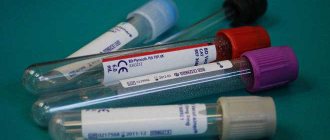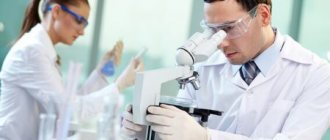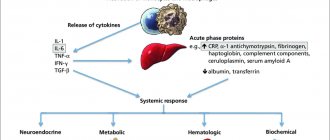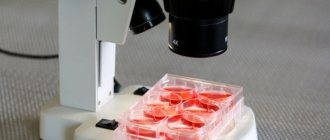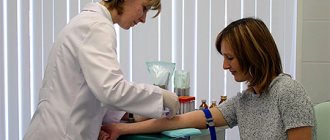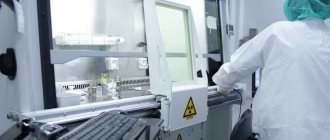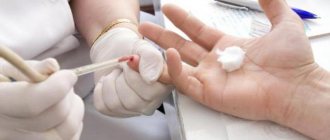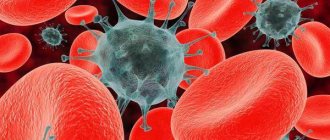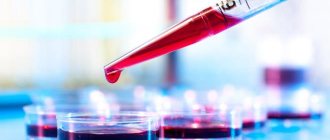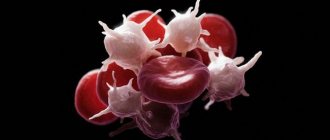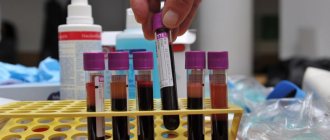Platelets are the tiniest cells in the blood. It depends on them whether the blood will clot. They also participate in the nutrition of vascular walls.
In the case of, for example, a cut, a person instantly feels it. But regardless of the sensations, something else happens: platelets quickly flow to the vessels in the wound, and here they stick together harmoniously. In a word, aggregation occurs, in simple terms - blood begins to clot.
Platelet aggregation: what is it?
Then the resulting clot is supplemented by various other cells, which include other platelets. As a result, the blood clot grows and then becomes large enough to block the damage in the vascular walls, and then blood stops flowing from them. Too much clotting is just as bad as too little: it can lead to heart attacks and strokes.
Hence the conclusion: as soon as the deviation begins, it is necessary to quickly be examined and begin treatment under the strict supervision of a doctor.
In the article we will look at platelet aggregation: what it is, what diseases are associated with this process and how to treat them.
What is aggregation?
In a person who is not ill, the aggregation serves for protection: bleeding due to an accidental cut is stopped due to the formation of a blood clot. Sometimes this is harmful and even dangerous: blood clots can appear in the vessels of vital organs. And this is already fraught with such dangerous pathologies as heart attack and stroke.
But if too few platelets are produced, it can easily cause severe blood loss. And if it occurs frequently, the body becomes depleted, and anemia, that is, anemia, occurs.
Aggregation is the process of platelets sticking together
Statistics show that mortality due to thrombosis is 0.004% of our planet's population per year.
Note! Prevention of this pathology is impossible without monitoring how many platelets are in the blood and how active they are.
According to doctors, indications for the study are:
- greater tendency to bleeding - uterine, nasal;
- bruises caused by even the most minor injuries;
- weak healing of wounds;
- tendency to swelling of the limbs.
What is platelet aggregation and what role does this process play in the body?
Aggregation is the gradual accumulation of many similar bodies (platelets) around a small center at the point of injury. Clot enlargement is controlled by natural inducers - substances that are released when tissue is damaged. Depending on the size of this damage, a certain number of platelets are activated, and the partially activated blood platelets are detached from the created conglomerate (aggregate) and returned to the bloodstream. This process, the reverse of accumulation, is called disaggregation.
The platelet aggregation stage is the third in the process of stopping bleeding. First, upon receiving a signal of damage, the central nervous system provokes a spasm of the ruptured vessel, and then platelet adhesion occurs in the blood to close the gap in the vessel.
After adhesion, the formation of platelet aggregates begins, which ends with irreversible aggregation - the formation of a loose plug. The final stage is the compaction of the platelet plug under the influence of thromboplastin and fibrin.
Aggregation, which is also the body’s independent stopping of bleeding
How does everything happen?
The vessel is clogged in several stages:
- the damaged vessel spasms, slightly reducing blood loss;
- adhesion begins - platelets rush to the damaged area, further reducing the flow of blood from the vessel, as they replace the damaged area of its wall;
- platelets all accumulate and conglomerates are created from them. This is what the aggregation looks like, with which a blood clot begins to form;
- the aggregation process forms a plug of platelets, colloquially called a scar or scab. It is still weakly held, and therefore it should be handled carefully, avoiding mechanical impact, in order to prevent new bleeding;
- thromboplastin fibrin threads makes the plug denser and stronger, compresses it, and then the scab holds better, and blood loss completely stops.
Platelet aggregation is one of the most important stages of stopping bleeding
Stopping bleeding does not end with aggregation, but this is one of its very important stages. However, there is another side to this coin. If aggregation is too high, the presence or absence of damage to the vessels does not matter: platelets will still stick together, creating blood clots. These clots begin to move along with the blood, preventing it from circulating. Soon the vessels become clogged, and the nutrition of the organs is disrupted.
Important! Even the most seemingly small, insignificant spontaneous reaction of this kind can completely clog very important arteries, which sometimes leads to death.
What is the norm?
Normally, aggregation in humans is 25-75%. That is, in his body, blood is produced “as it should”, and each of the tissues receives its own norm of iron and oxygen.
The platelet concentration in a healthy person is around 200-400 cells x 109 per microliter. Also, when examining blood, they use a stopwatch to check how long it takes for large platelet aggregates to form. In healthy blood, this process takes 10-60 seconds.
Platelet aggregation
Platelet aggregation - what is it?
Platelet aggregation is a process in which cells stick together. This forms a plug that closes the wound. At the initial stage, blood cells stick together and later adhere to the walls of the vessel. The result is a blood clot called a thrombus.
Platelets are colorless blood cells involved in the clotting process.
In a healthy body, aggregation is protective: platelets clog the wound and bleeding stops. In some cases, the formation of blood clots is undesirable because they block blood vessels in vital organs and tissues.
- Increased activity of colorless blood cells can lead to stroke and heart attack.
- Decreased platelet production often leads to large blood loss. Frequent bleeding that does not stop for a long time leads to exhaustion and anemia (anemia).
According to statistics, one in 250 people die from thrombosis every year.
In order to prevent the disease, it is necessary to control the level of platelets and their ability to aggregate.
Doctors recommend conducting research when:
- frequent bleeding - uterine, from the nose;
- the appearance of bruises from the slightest injury;
- poorly healing wounds;
- swelling.
Normal indicators
Normally, aggregation is 25–75%. Such indicators indicate good hematopoiesis and sufficient oxygen supply to tissues and organs.
Platelet aggregation - platelets rush to the site of injury, stick together, close the wound and stop bleeding
Platelet norm - table
| Age | Indicator, x 10^9/l |
| Newborn | 100–420 |
| Child under one year old | 160–320 |
| 1–4 years | 150–300 |
| 15–18 years old | 180–340 |
| Men over 18 years old | 180–400 |
| Women over 18 years old | 150–380 |
When should tests be performed?
For analysis, the readings are as follows:
- blood clotting too quickly;
- blood clots that form too easily;
- thrombocytopenia;
- thrombophilia;
- constant bleeding - any;
- abnormally frequent swelling;
- bleeding gums;
- time-consuming wound healing;
- long-term use of acetylsalicylic acid and products containing it;
- planning for procreation;
- complications when carrying a baby under the heart;
- the beginning of pregnancy;
- von Willebrand's, Glanzmann's, Bernard-Soulier diseases;
- cardiac ischemia;
- obstructed blood circulation in the brain;
- varicose veins;
- taking antiplatelet drugs;
- autoimmune diseases;
- preparation for surgery;
- infertility, unsuccessful conceptions;
- failed pregnancies resulting from artificial insemination;
- stoppage of fetal development;
- taking hormonal contraceptives;
- Glanzmann's thrombasthenia.
Video - What is thrombocytopenia?
Glanzmann's thrombasthenia
It would also be a good idea to show your initiative in getting tested for platelet activity.
Analyzes
A blood test can detect:
- pathology of the hematopoietic system;
- ailments of the cardiovascular system.
The analysis is also taken to monitor the course of many ailments, as well as change therapy, if such a need arises.
The analysis is carried out in a special laboratory. First, blood is taken from the patient’s vein.
To determine platelet aggregation, it is worth taking tests
It’s great if, as preparation, the patient:
- from one to three days sits on a diet prepared by a doctor;
- eight hours before donating blood, refuses fatty foods and medications, including external use;
- on the day before donating blood, does not take immunostimulating and invigorating foods, alcohol, garlic, does not smoke cigarettes or other tobacco products.
For the analysis to be correct, the patient must follow all of the above recommendations. Otherwise, substances will enter the blood that change and, therefore, spoil the results.
Blood is taken in the morning. The only thing the patient can drink before this is clean water without gas.
Blood samples are taken for analysis in the morning
After taking blood, inducers are added to it - substances similar to natural cells that help create blood clots. Here are used:
- ADF;
- ristocymine;
- adrenalin;
- arachidonic acid;
- collagen;
- serotonin.
Aggregation is determined by passing light waves through the blood plasma before, as well as after, its coagulation. Here they look at various wave parameters:
- character;
- shape;
- speed.
Note! In case of inflammation, taking blood is contraindicated.
Among other factors, the results are affected by which inductor was used, as well as its quantity.
Preparing for analysis
In order for the research results to be reliable, a number of rules must be followed before analysis. Before the procedure itself, you cannot eat anything, because blood is drawn on an empty stomach. It is only allowed to drink non-carbonated clean water. It is also important to exclude all substances that affect platelet aggregation activity:
- beta blockers;
- diuretics and beta-lactams in high doses;
- calcium channel blockers;
- aspirin medications;
- antimalarials;
- cytostatics;
- vasodilators;
- antifungal drugs.
They should be abandoned a week before the procedure. Some products also affect aggregation activity. For this reason, for 1-3 days before the analysis, you must adhere to a diet, excluding:
- garlic;
- alcohol;
- coffee;
- onion;
- fish fat;
- turmeric;
- ginger.
A blood test to determine the rate of clot accumulation is performed on an empty stomach. At least 6-8 hours must pass from the last meal to blood sampling.
Types of aggregation
There are several types of platelet aggregation.
| View | Description |
| Spontaneous aggregation | Detection is carried out using a technique that does not include an inductor. Here, to detect platelet activity, blood is poured into a test tube, and it is heated to 37 degrees in a special device. |
| Induced aggregation | To detect, an inductor is added to the plasma. Typically, one of the following substances is used: collagen, ADP, ristocymine, adrenaline. This method is used to diagnose certain blood pathologies. |
| Moderate aggregation | When carrying a baby, it is provoked by blood circulation in the placenta. |
| Low aggregation | Caused by diseases of the heart and blood vessels. If your platelet count is low, your risk of bleeding is high. Happens to representatives of the fairer sex during menstruation. |
| High aggregation | Provokes increased formation of blood clots. The results are swelling and a feeling of numbness. |
There are several types of platelet aggregation
How to understand the results?
An assay using three common inducers and adding new ones if required is done if one clotting factor predominates over the others. For diagnosis, the detected altered norm with one inductor in the absence of movement with the others is important. And the results are assessed by a specialist.
Here are the factors that can trigger a drop in aggregation:
- success of antiplatelet treatment;
- thrombocytopathy.
What can thrombocytopathy do?
This type of disease can be inherited from parents or acquired after suffering from certain diseases. According to statistics, every tenth person has this. What is common to such diseases is the presence of a connection with the ability of platelets to accumulate certain substances.
Because of this, the bleeding does not stop and blood clots do not form. This is fraught with the fact that the slightest scratch can cause severe external bleeding, and a bruise can lead to internal bleeding.
Thrombocytopathy is a serious disease characterized by decreased platelet aggregation
This is already noticeable in a child: such children often have bleeding gums, bleeding from the nose, bruises appear on the body from the slightest slap, and as soon as the child hits something with his knee or elbow, the place swells. Teenage girls suffering from this pathology have protracted periods, and a lot of blood is lost during them. As a result, anemia develops.
Important! All this may not appear until a person becomes ill with an infection caused by microorganisms, takes certain medications, or attends certain physical procedures.
Secondary thrombocytopathies
Symptomatic, or secondary, thrombocytopathies are formed due to the following pathologies:
- chronic leukemia;
- multiple myeloma;
- pernicious anemia;
- the last stage of development of uremia;
- thyroid dysfunction.
If a patient's bleeding is too severe during surgery, the surgeon can be sure that he has thrombocytopathy.
With thrombocytopathy, it is extremely difficult to stop bleeding
Aggregation also becomes higher in the following cases:
- widespread vascular atherosclerosis;
- hypertension;
- rupture of internal organs;
- thrombosis of arteries in the abdominal cavity;
- stroke;
- diabetes.
Hypoaggregation
As dangerous as too high platelet aggregation is, too low is also dangerous. Due to hypoaggregation, blood clotting is much worse. Therefore, the blood does not thicken in the wounds, and they do not heal. As a result, a lot of blood flows out from the slightest scratch.
This pathology, like its opposite, can be obtained from ancestors, or it can be acquired during life. Another similarity is that it can also be awakened by infections, physiotherapy, and some medications.
Every tenth person on Earth is sick with it.
Here are diseases in which hypoaggregation may occur:
- uremia;
- chronic leukemia;
- anemia.
Video - Problems with blood clotting
Nutrition
A person who wants to return platelet levels to normal must eat properly. He must consume something that helps the blood-forming organs perform their functions:
- buckwheat;
- fish;
- red meat, prepared in any way;
- beef liver;
- cheese;
- eggs;
- greenery;
- salads, which include carrots, nettles, beets, bell peppers;
- pomegranate;
- bananas;
- rowan;
- rosehip juice.
A patient with platelet hypoaggregation needs to carefully monitor his diet.
There are also foods that are harmful to hematopoiesis:
- ginger;
- oranges, lemons, tangerines and other citrus fruits;
- garlic.
Traditional therapy
If the pathology starts, the patient will have to be hospitalized. In this case he is prescribed:
- aminocaproic acid solution 5% intravenously;
- sodium adenosine triphosphate intramuscularly/subcutaneously;
- "Emosint";
- "Dicynon";
- tranexamic acid.
- platelet transfusion - for serious bleeding.
Patients are not prescribed blood thinning medications:
- "Troxevasin";
- "Aspirin";
- "Paracetamol";
- "Ibuprofen";
- "Eufillin";
- antidepressants.
The patient must take medications prescribed by the doctor
Traditional therapy
Traditional therapy is used as an auxiliary technique, since herbs alone are clearly not enough to raise platelet levels.
Nettle:
- take a tablespoon of chopped nettle;
- pour one glass of boiling water;
- boil for 10 minutes over low heat;
- strain and filter;
- take before meals every time;
- continue for 30 days.
Traditional medicine is an effective auxiliary technique
Beet juice:
- grind raw beets;
- mix in a tablespoon of sugar;
- hold on until morning;
- In the morning, squeeze out the juice, which should be drunk before breakfast;
- repeat for a couple of weeks.
Sesame oil. Drink for therapeutic and preventive purposes three to four times a day on a full stomach.
Normalizing values
| Type of inductor | Aggregation level, % |
| Ristomycin | 30-60 |
| Adrenalin | 35-92,5 |
| ADF | 30,7-77,7 |
| Collagen | 46,4-93,1 |
The results of the analysis display several more indicators that are obtained based on the research conducted by the laboratory assistant. Their list and normal values:
- bleeding time – 2-3 minutes after puncture;
- adhesion – 20-50%;
- clotting time in the analysis is 5-10 minutes for venous blood;
- thrombin time – 15-18 seconds;
- activated partial thromboplastin time – 30-40 seconds;
- fibrinogen – 2-4 g/l;
- prothrombin index – 93-107%.
The course of treatment is determined depending on the result of aggregation tests. If levels are below normal, prolonged bleeding is possible. The vessels become brittle, which is externally manifested by bruises that occur without blows. For this reason, it is important for people with low platelet levels to avoid injury.
- aspirin-based medications;
- Dipyridamole;
- Indomethacin;
- Ibuprofen;
- Eufillin;
- Troxevasin.
The prescription of medications also depends on the results of the analysis. To increase the number of platelets, you need to take drugs that increase blood clotting. The following medications are used:
- Dicynone, Emosint and Tranexamic acid for oral administration;
- 5% solution of Aminocaproic acid for intravenous injection;
- Sodium adenosine triphosphate for intramuscular injections.
If massive bleeding develops due to poor coagulation, it is stopped by transfusion of donor platelet mass. The treatment regimen for hyperaggregation is the opposite. In this condition, active thrombus formation and high blood viscosity are observed. For this reason, it is necessary to take anticoagulants - thinning drugs.
- novocaine blockade - relieves irritation in the pathological focus;
- painkillers – relieve pain;
- drugs that dilate blood vessels - facilitate the flow of blood.
For any deviations of aggregation from the norm, it is important to carefully consider your diet. Against the background of a decrease in the number of platelets, it is necessary to eat foods that improve hematopoiesis. Products with large amounts of vitamins B and C are useful in this case:
- buckwheat;
- rose hip;
- bananas;
- greenery;
- beef liver;
- eggs;
- fish;
- red meat;
- beet;
- carrot;
- grenades;
- black currant;
- chokeberry.
Foods that reduce blood clotting should be excluded from the diet: garlic, citrus fruits, ginger, seafood, red and green vegetables. On the contrary, they need to be added to the menu during hyperaggregation. Such products will help reduce blood viscosity. Additionally, for this purpose, it is recommended to drink about 2-2.5 liters of water per day.
- buckwheat;
- chokeberry;
- pomegranate.
Non-traditional methods of treatment can be used as an addition to the main treatment, but before using herbs you should consult a doctor. Some plants are prohibited for thrombocytosis. To increase aggregation, you can use the following recipes:
- Take 1 tbsp. l. ground sweet clover grass. Pour a glass of boiling water over the raw material and let it brew for half an hour. Next, divide the product into 3-4 approximately equal parts. Drink all portions throughout the day. Repeat the procedure daily for a month.
- Grind the peony root, add 70% alcohol to it in a ratio of 250 ml per 1 tbsp. l. raw materials. Place the product in a dark place for 21 days. Shake the bottle periodically. After the specified period, you can start taking the tincture 30 drops 3 times a day for 2 weeks. Next there should be a week break, after which the course is repeated.
- For 50 ml of boiling water, take 1 tsp. crushed ginger root and green tea. Add cinnamon on the tip of a knife. Let the tea sit for about 15 minutes. If desired, you can add lemon. Drink the product throughout the day.
- Drink 100 ml of freshly squeezed orange juice daily. For variety, you can mix it with pumpkin in a 1:1 ratio.
Other herbs and products reduce aggregation: nettle, sesame oil, beet juice. They should also be used in consultation with a doctor and only for auxiliary therapy. The products are prepared according to the following recipes:
- Pour 250 ml boiling water 1 tbsp. l. dry nettle. Heat the product over low heat for about 10 minutes. Can be taken after cooling. Drink before meals 1 time every day for a month.
- Take 1 teaspoon of sesame oil every day after meals.
- Grind medium-sized beets on a grater, add a little sugar. Leave the vegetable overnight. In the morning, squeeze out the juice and drink on an empty stomach. Repeat this every day for 2-3 weeks.
The normal degree of aggregation depends on the concentration and type of inducing reagent:
- for the reaction with collagen (reagent concentration - 5 and 10 μg/ml) the norm is 75% and 93.1%, respectively;
- with adrenaline (150 and 300 µmol) - 46% and 92.5%;
- with ADP (up to 5 µmol and 5-10 µmol) - less than 66% and 66.1-77.7%.
When testing with Ristomycin and arachidonic acid, the result is determined by a positive or negative reaction.
The normal platelet concentration in a blood test is 180-400 U/nl, depending on the gender, age and condition of the patient.
When carrying a baby
It is necessary to control aggregation here because strong deviations are harmful to the mother and her unborn child. Here some errors are acceptable in the indicators. For example, a slight increase in aggregation sometimes occurs due to the development of placental circulation.
But hyperaggregation is already dangerous: miscarriage/spontaneous abortion is possible. Here are the main reasons for this:
- toxicosis, resulting in a lack of moisture in the body;
- lack of fluid caused by vomiting, frequent bowel movements, too little fluid intake;
- pathologies causing hyperaggregation.
A woman suffering from hypo- or hyperplatelet aggregation needs to be especially responsible about her health during pregnancy
If clotting is too strong, it is useful to change your diet. Here you need food that thins the blood. For example:
- linseed, olive oils;
- onion;
- tomato juice.
Products with magnesium are also necessary:
- eggs;
- milk;
- legumes;
- oatmeal;
- buckwheat;
- cell.
If the diet fails, the doctor prescribes medications.
With minor deviations in aggregation, there is a chance that the functioning of the heart and blood vessels will return to normal with proper nutrition: foods that are a source of magnesium are useful. If there is no improvement, the specialist prescribes medications.
A pregnant woman needs to have her blood tested regularly
Note! The result of hypoaggregation can be uterine bleeding during and after childbirth
Hypoaggregation may have the following reasons:
- diuretics, antibacterial agents;
- autoimmune and endocrine pathologies;
- allergy;
- severe toxicosis;
- bad menu;
- lack of vitamin B12 and ascorbic acid.
To improve blood production, a pregnant woman with hypoaggregation can benefit from foods with vitamin B and ascorbic acid:
- black currant;
- apples;
- Bell pepper;
- cabbage;
- citrus;
- rosehip tincture.
By the way. The doctor will prescribe medications that are useful for blood production, but harmless to the fetus.
When planning a pregnancy, a woman needs to have her blood tested.
When planning procreation, it is also extremely important to take an aggregation test. Indications for analysis are:
- infertility therapy;
- frequent pregnancies with miscarriages;
- pregnancy planning;
- taking contraceptives.
If the disease is detected on time, the doctor will prescribe therapy, and the likelihood of complications will be minimized.
Research methods
To diagnose pathological conditions, it is necessary to know not only how platelet aggregation affects and what it is, but also the normal characteristics of this process under various conditions.
To determine the aggregation ability of blood cells, special devices are used - aggregometers. They allow you to record and automatically analyze all events occurring with blood cells. Data is displayed in electronic (numerical) and graphical form.
In the human body, inducer substances (provokers of cell accumulation) are adrenaline (epinephrine), collagen, adenosine triphosphate, von Willebrand factor and other compounds. Substances that are synthetic analogues of inducers or provoke the production of natural aggregation factors are used as laboratory reagents.
In order to accurately differentiate pathology and reduce the influence of extraneous factors on the accuracy of the analysis, the study is carried out with 3-5 inducers.
With Ristocetin
Ristocetin (Ristomycin) is an antibacterial drug that is used primarily as an inducer reagent in platelet aggregation assays.
The mechanism of action of the method is based on the ability of Ristomycin to influence the interaction of von Willebrand factor with one of the glycoproteins that ensure the attachment of blood cells to the site of damage. In the absence of this factor, the inactive glycoprotein is quickly destroyed in the bloodstream.
In some hereditary pathologies, a normal platelet response to the effects of other inducers (epinephrine, ADP, etc.) is observed. However, the results of the study using Ristocetin show significant irregularities.
If abnormalities are detected, normal plasma is added to the biomaterial for additional differential diagnosis. Normalization of the process or repeated pathological results indicate the root cause of the deviation.
With collagen
Collagen is a natural inducer of aggregation. Contact of this connective tissue protein with blood means that damage to the vessel has occurred in some area.
The process of aggregate formation with the participation of collagen has a fairly long latent period. During the latent phase, a blood enzyme (phospholipase) is activated. Depending on the concentration of the laboratory inducer, the preparation time for the reaction can be up to several minutes.
After completion of the latent period, secondary reagents (including thromboxane A2) are formed in blood cells, which sharply increase the intensity of platelet interaction.
The accuracy of the test result depends on the correct interpretation of the data and the type of reagent. The most common concentration of laboratory collagen is 50 ng/L. At a different concentration of the inducer substance, the duration of the latent phase changes accordingly.
With adrenaline
The adrenal hormone epinephrine interacts with adrenaline receptors and causes significant inhibition of the enzyme adenylate cyclase. This increases the intensity of thromboxane formation, provoking active aggregation of blood cells.
The thromboxane mechanism of aggregation can cause only the second wave of the process. Some researchers explain the onset of the reaction by the direct influence of epinephrine on the permeability of cell membranes and the transport of calcium ions.
An adrenaline-induced blood test for platelet aggregation allows us to exclude the most common pathologies of the coagulation system.
Arachidonic acid, which belongs to the group of omega-6 polyunsaturated fatty acids (PUFA), is a natural stimulator of the formation of platelet conglomerates.
The mechanism of action of this PUFA is complex: it affects the synthesis of inflammatory factors (prostaglandins), thromboxane, phospholipases C and A2. Activation of the first phospholipase leads to the mobilization of calcium ions inside cells, activation of more platelets and the release of secondary messengers of the process. Activation of phospholipase A2 releases its own (endogenous) arachidonic acid, which further accelerates aggregation.
Due to the complex action and release of endogenous PUNA, the formation of aggregates occurs quite quickly and is not divided into 2 waves.
Analysis with a PFA inducer allows one to differentiate the pathology of aggregation and the result of long-term use of antiplatelet agents (NSAIDs, some antibiotics, diuretics, etc.). When taking antiplatelet agents, the arachidonic acid test is negative.
The nature of the effects of adenosine triphosphate depends on its concentration. With a small dosage of ADP, aggregation occurs in 2 waves due to the fact that the non-concentrated reagent acts as a catalyst for the release of its own inducers of the process. The primary, small wave of aggregate formation is provoked by external (exogenous) ADP.
Large doses of adenosine triphosphate (more than 10-6 mol) cause a strong reaction, so both waves of the process flow into one.
When analyzing the research results, the laboratory specialist pays attention to both the numerical data (process speed) and the type of aggregation diagram. Deviation from the normal appearance of the graph (for example, reversible aggregation in response to the administration of large doses of ADP) indicates the nature of the pathology: impaired sensitivity of blood clotting cells, slow release of platelets, etc.
No less important an indicator than the induced formation of a conglomerate is spontaneous platelet aggregation (SAT). This process is studied without the participation of inducing substances. The intensity of SAT is determined by morphological characteristics and visual methods.
Increased spontaneous aggregation is a dangerous phenomenon, because does not depend on tissue damage and occurs in the microvasculature, which increases the risk of thrombosis.
In childhood
Although hyperaggregation usually appears more often in adults, today representatives of the younger generation are increasingly affected by it.
You can inherit it from your parents or “catch it” yourself. Moreover, children can get hyperaggregation in the same way as adults. Here are the main reasons:
- ailments of the blood, heart and blood vessels;
- operations;
- pathologies caused by viruses and infections.
Important! Before one year of age, the reasons may lie in lack of moisture/anemia. In adolescents - stress, as well as improper development.
Sometimes platelet aggregation disorders occur in children
Symptoms of aggregation deficiency in children also include bruising and nosebleeds. In teenage girls, this can manifest as long periods with heavy blood loss. You can notice pinpoint rashes on the skin of all sick children. Every fifth person has bleeding gums.
During therapy, first of all, they find out what caused the aggregation deviation. Sometimes simple adjustments to your diet and drinking regime are enough. Sometimes this pathology is a secondary disease, and the primary is something else that needs to be treated first.
If necessary, the hematologist will additionally examine the patient and prescribe medications based on his age and the severity of the pathology.
Features in children
Despite the fact that increased aggregation capacity is usually found in the adult population, recently there has been an increase in cases of the disease in children.
Hyperaggregation can be either hereditary or acquired. The causes of elevated platelet levels are not much different in adults. Mainly:
- diseases of the circulatory system;
- infectious and viral diseases;
- surgical intervention.
- In children under one year of age, hyperaggregation can be caused by dehydration and anemia. In adolescence, stressful situations and physiological growth of the body play an important role.
- Hypoaggregation in children manifests itself in the form of nosebleeds and bruises. Girls in adolescence may experience heavy periods. In 100% of cases, pinpoint rashes are observed on the skin, and 20% of children experience bleeding gums.
Treatment begins with finding out the cause of the deviation from the norm in platelet aggregation ability. Sometimes adjusting your diet and drinking regime is enough. In some cases, treatment of the disease that caused the abnormality is required.
If necessary, a hematologist will conduct an additional examination and prescribe medication according to the patient’s age and severity of the disease.
Disease Prevention
The result of a serious deviation in aggregation can be big problems with the body, and therefore you should undergo a routine examination and take all the necessary tests. This is especially important for people at risk. If even the slightest deviations are detected, it is necessary to begin treatment and monitor changes.
If there is a deviation in aggregation, prevention will also be useful, which, although it will not reduce the risks of severe complications to zero, will reduce them many times. The amount of water you drink is also important here: the patient should drink about a couple of liters per day. It is also important to adhere to the diet prescribed to you personally. You should eat in small portions: small portions about five times a day. Large amounts of calories per meal should be avoided. It is also useful to avoid stressful situations and regularly take walks in the fresh air.
To prevent platelet aggregation disorders, it is worth taking regular tests
